Valentine’s Day marketing strategies for winning shoppers’ hearts
 Nicolas Algoedt
Nicolas Algoedt
Nov 4, 2021
 Nicolas Algoedt
Nicolas Algoedt
Nov 4, 2021
 Nicolas Algoedt
Nicolas Algoedt
Nov 4, 2021
 Nicolas Algoedt
Nicolas Algoedt
Nov 4, 2021
It’s that time of year again, when chocolate, red roses, and Be Mine candy hearts invade.
How are you going to keep your Valentine’s Day marketing fresh? How will you stand out with more people buying online?
We’ve compiled a couple of personalized Valentine’s Day marketing strategies for today’s cross-channel shoppers. Happy reading!
Valentine’s Day Promotion Ideas for Digital Business
Move beyond Hi, {First Name} Valentine’s emails
Make Valentine’s purchases fun with gamification
Build trust with Valentines’ Day shoppers using social proof
Individualize Valentine’s Day product and content recommendations with AI
Use rich push notifications to curb Valentine’s Day cart abandonment rates
Retarget Valentine’s shoppers with a high likelihood of purchase with AI
Orchestrate multichannel customer journeys for each Valentine’s shopper with AI
Shape Better Experiences with Personalized Marketing and AI
$21.8 billion… that’s how much people spent on Valentine’s Day gifts last year. Now imagine capturing a slice of that. Using the right Valentine’s Day marketing strategies, you can.
With more people flocking to digital, it’s harder and more expensive to make your brand stand out.
In this blog, we’ll look at how marketers and eCommerce brands can increase revenue on Valentine’s Day. Nothing you see here requires a team of developers, a mastery of design, or endless implementation by expensive outside consultants.
In other words, the Valentine’s Day marketing strategies you read about here are all about agility.
Cute heart emojis… consumers’ inboxes are full of those.
Firstly, they may attract their attention, but they’re not providing much value.
Secondly, your email needs to be tailored. Generic content on Valentine’s Day isn’t going to drive sales.
Thirdly, you need to show consumers you get them. Make their experience easier and more rewarding.
In comes smart recommendations.
So what are smart recommendations? In essence, they’re recommendations based on each
consumer’s past purchases and browsing behavior.
For example, email personalization starts with understanding your prospective and existing customers.
In other words, it involves:
Next, those insights get layered with AI recommendations.
Finally, you can drag-and-drop those recommendations into super personalized emails.
For example, you’re an online fashion retailer. A visitor browses Valentine’s Day products on your website.
Even though they added a ring and a red sweater to their shopping cart, they haven’t checked out yet. Bummer.
In this case, you can send them an email with those products. The shopper will recall them from their search and see instant value.
Further, by limiting their choices and focusing on what they want, you give them a reason to buy now.
Related Content: Email Marketing Reinvented for Growth
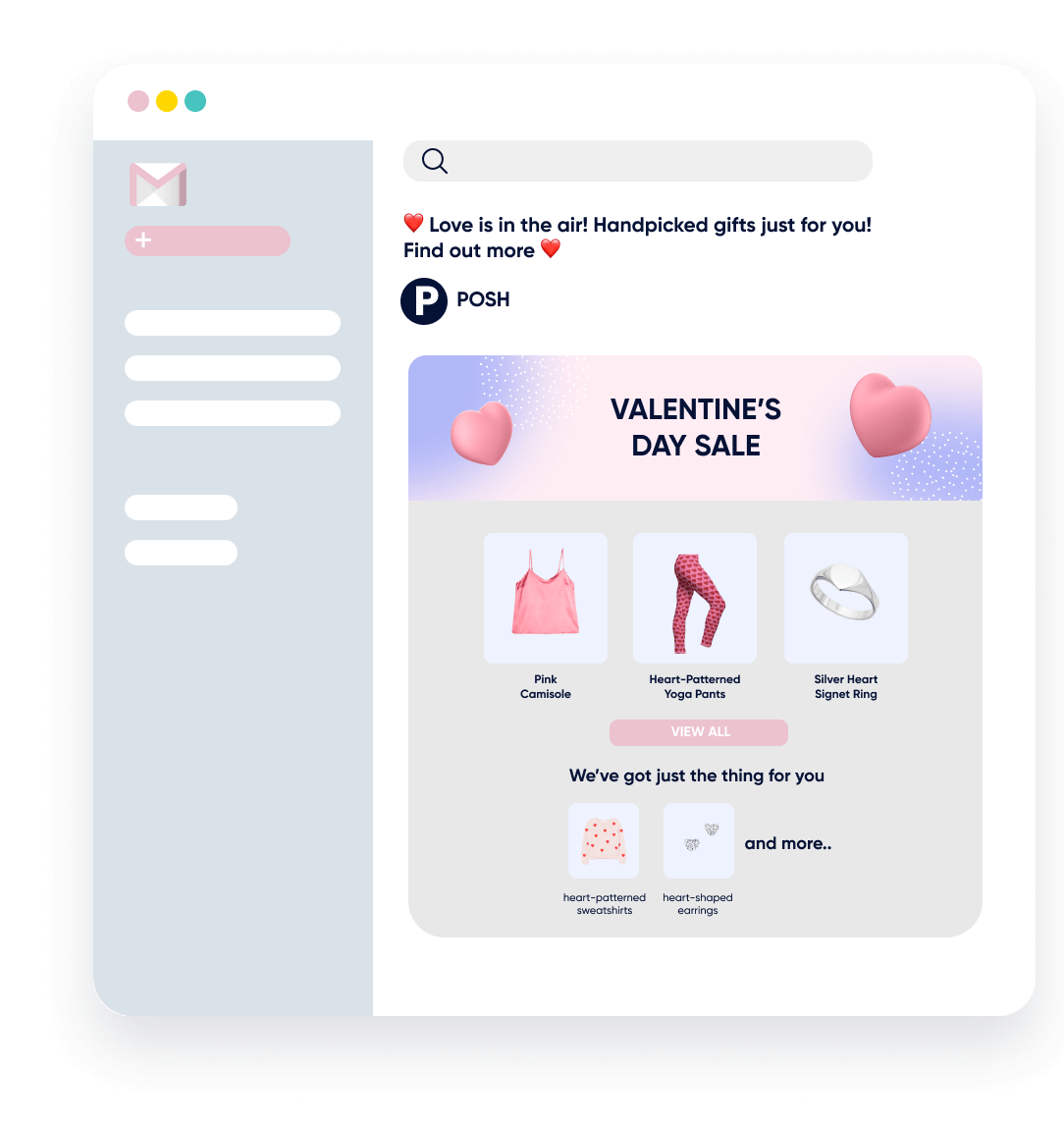
Decisions. Decisions. Analysis paralysis. We’ve all been there.
The pressure to find the perfect gift is too much.
However, with gamification can incentivize shoppers to take a specific path.
First, imagine you’re a digital business that sells soaps, chocolates, and essential oils.
So you probably have lots of SKUs. And if a shopper is buying last minute all that choice can be overwhelming.
Therefore, use gamification to make shopping fun and rewarding.
Next, offer each shopper a specific discount to drive them towards a product or category.
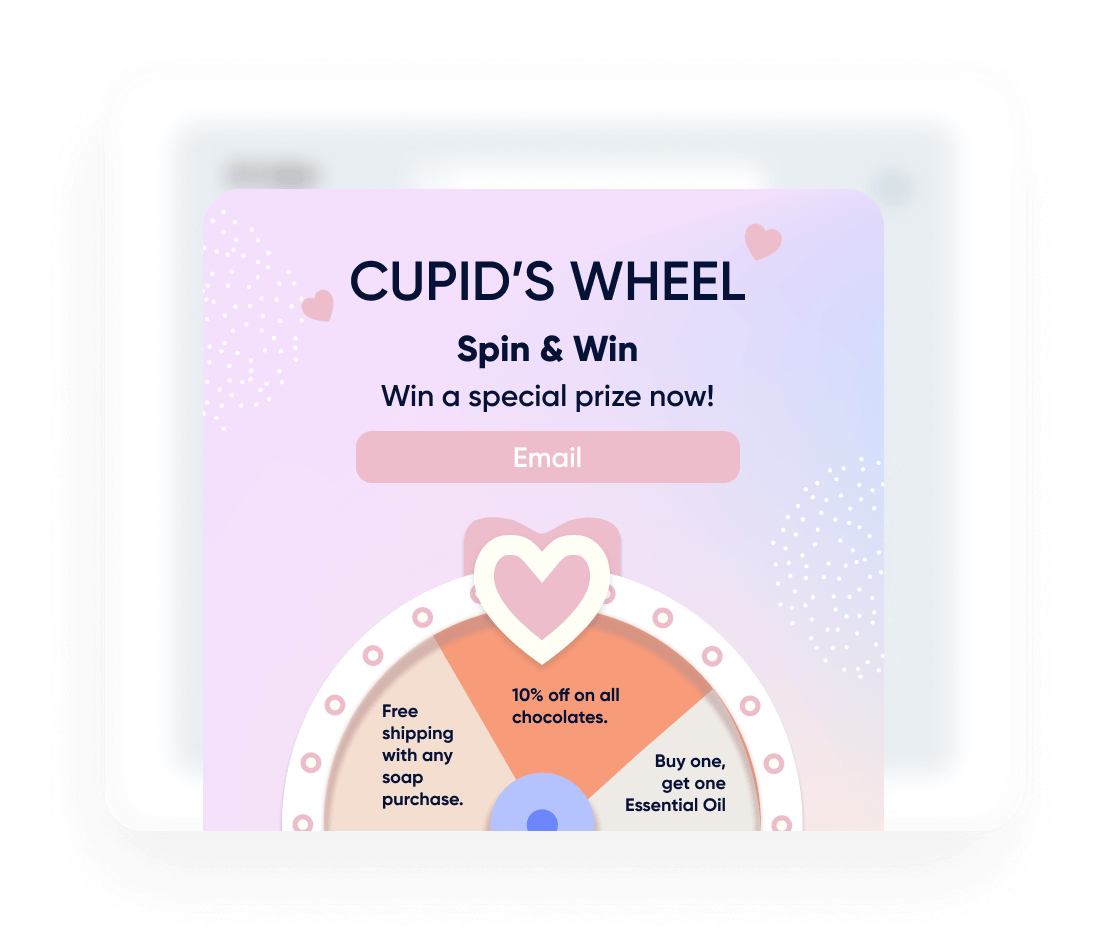
Furthermore, you turn a blah onboarding experience into a fun one, turning anonymous visitors into known customers.
After you have a visitor’s name and email, you can get to know them.
With Insider’s Unified Customer Profile, you can see each person’s interactions and purchases in a neat dashboard. In other words, you can market and build customer experiences with ease and agility.
Build trust and create urgency with social proof.
What is social proof? It’s messaging that gets shoppers to act. It’s a perfect Valentine’s day marketing strategy to drive sales.
For example, “9 people have bought this item” or “only 3 left in stock” are common examples of social proof messaging.
In this case, let’s say you’re an online jewelry retailer.
Buying jewelry online isn’t as simple as it sounds. So what are some of the issues that throw customers off?
In summary, social proof can be the missing link between consideration and purchase.
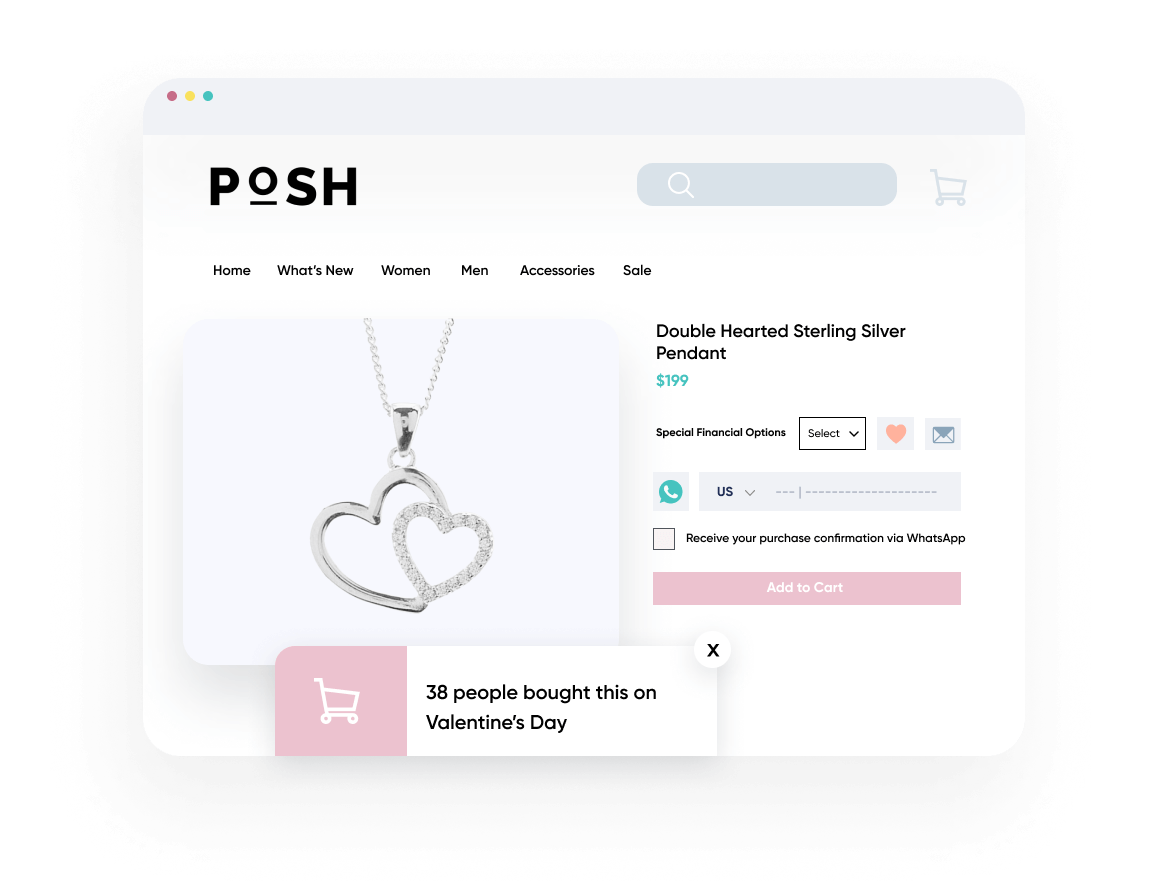
How can you turn up the heat on Valentine’s Day marketing? Make AI-based recommendations.
In this example, you’re an online book retailer who wants to promote Valentine’s Day authors and products. Using onsite personalization, you can customize your website to reflect visitor behavior and interests.
For instance, you have a visitor who loves reading romance novels. In addition to eyeing specific titles, they have even added a few books to their cart.
Consequently, you can run product recommendations on their shopping cart page based on these insights. For example, show them Valentine’s Day books, card sets, and related products and increase their average order value (AOV).
In addition, display a progress bar. This shows visitors how much they need to buy to reach the reward threshold, like free shipping or a discount code.
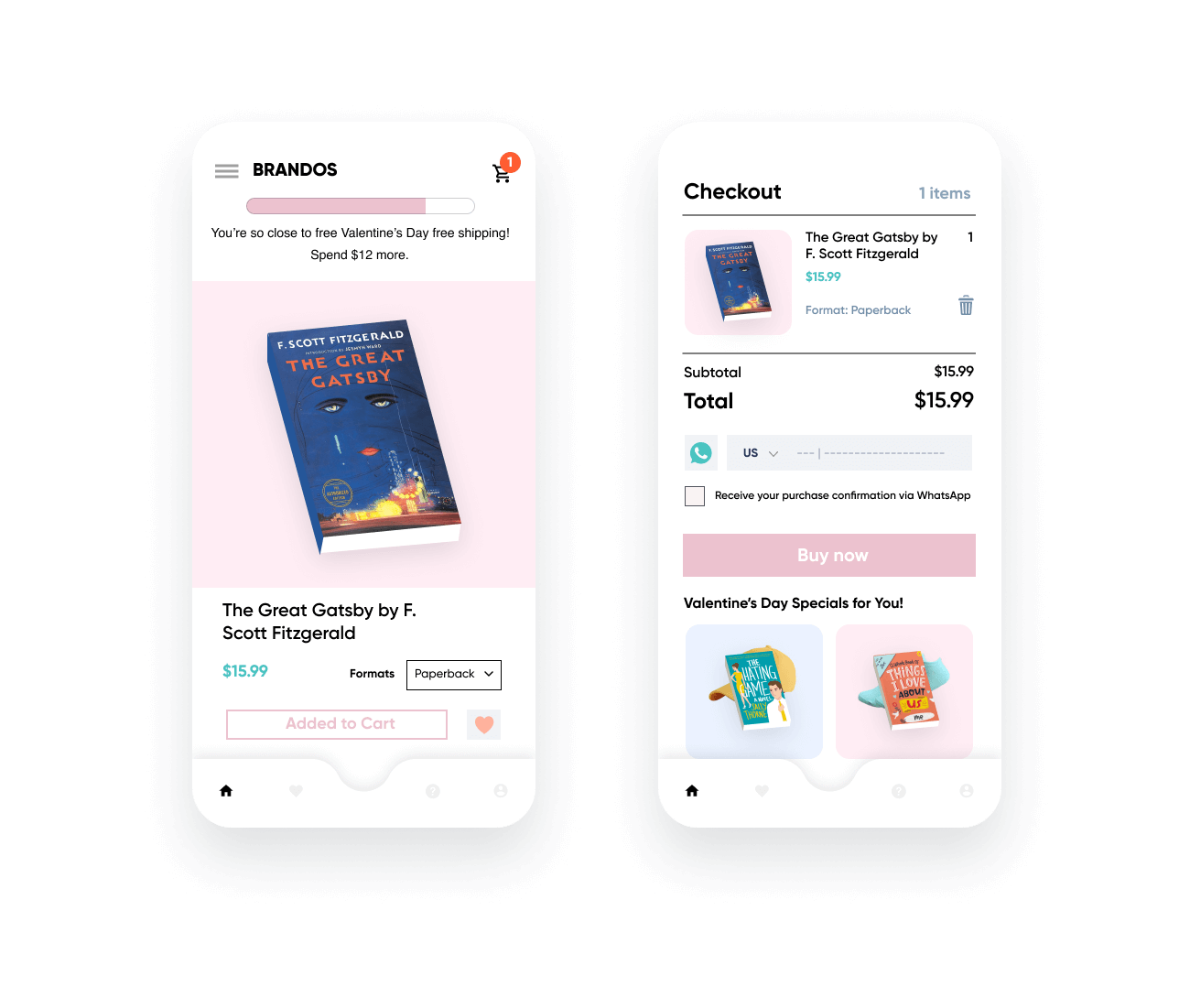
As more people shop for Valentine’s Day gifts on mobile devices, rich push notifications can remind them about items they left in their carts. In other words, these reminders can get them to finish what they started.
As more brands adopt push notifications, rich push notifications can help you stand out. By using visually compelling alerts, you can overcome push-blindness and drive engagement and conversion.
Imagine you’re a consumer electronics store. You have a visitor eyeing 4K TVs. You see they’ve added a 55″ model to their cart but haven’t crossed the checkout finish line.
What to do, right?
Send the visitor eye-catching visuals of the new 4K TV. Sweeten the pot with a discount or free shipping and increase the chances of getting it into a happy customer’s home.
Related content: The Definitive Guide to Mobile Marketing
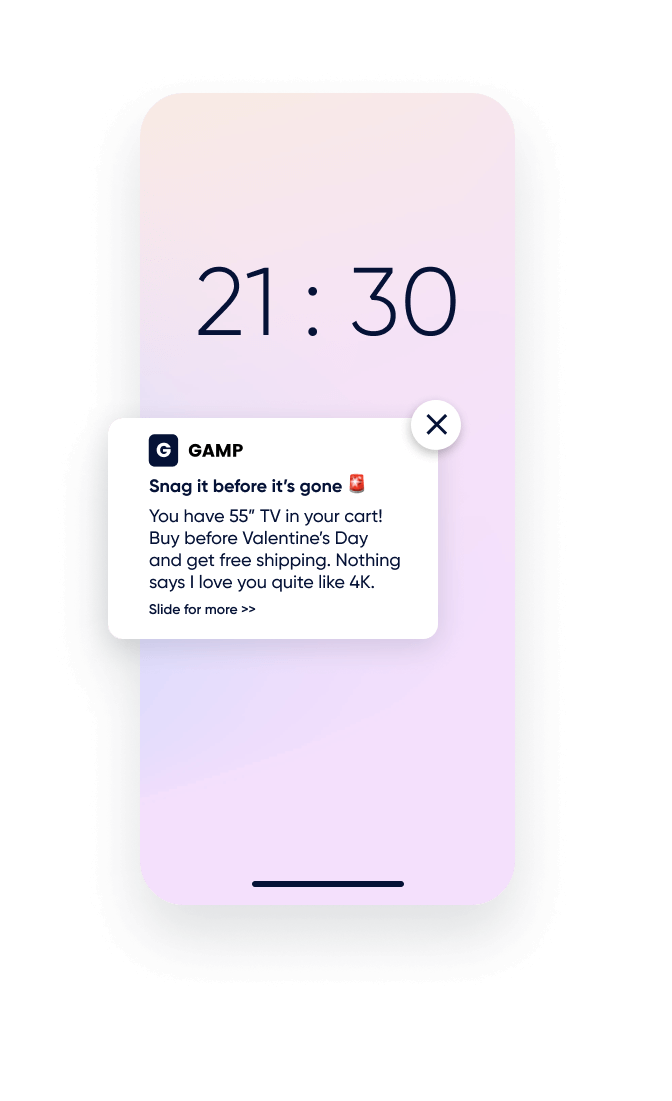
Valentine’s Day shopper behavior is evolving. As a result of the pandemic, many consumers adapted to buying essentials, gifts, and paying their bills online.
As smartphones become increasingly important in browsing and consideration stages, marketers need to be aware of customers’ cross-device behaviors. More importantly, they need tools and strategies to meet consumers where they are.
One solution to multichannel consumption patterns is customer journey orchestration, which enables marketers to create high-converting user journeys based on visitors’ historical and predicted behaviors on email, mobile apps, ads, web push, and onsite.
Insider’s customer journey orchestration tool, Architect, allows marketers to deliver personalized 1:1 customer experiences across channels. In turn, these consistent and relevant journeys drive conversions and customer loyalty.
What better way to inspire love than with a romantic getaway?
In this case, you’re a travel booking site. Your goal is to attract visitors and get them to book Valentine’s Day getaways.
The following scenario shows how you can convert a “just browsing” shopper to a buyer:
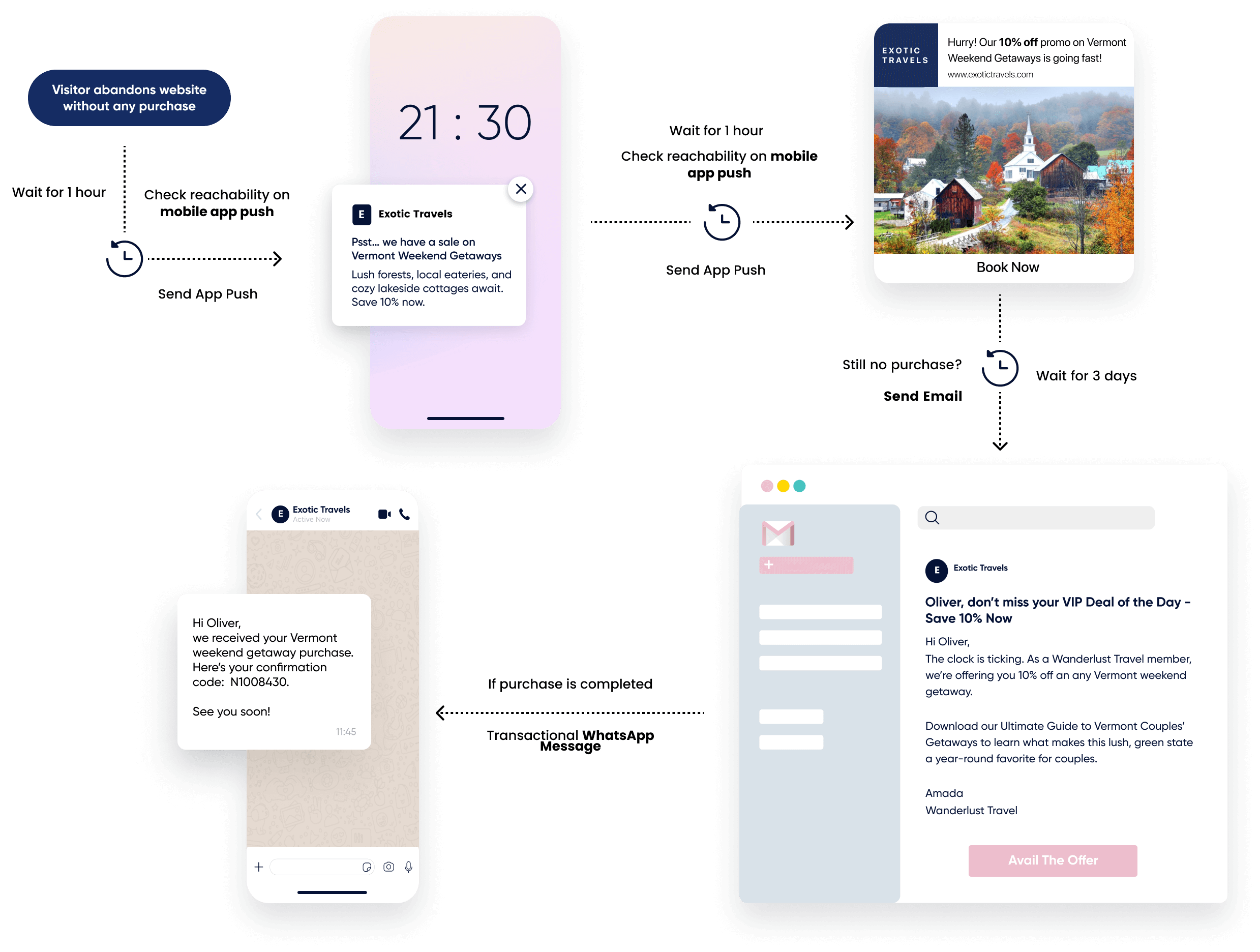
Related content: Interactive customer journey with Architect for eCommerce.
We hope you walked away with some Valentine’s Day marketing strategies. However, AI, cross-channel messaging, and personalization aren’t seasonal – they’re part of a year-round marketing strategy.
Drop us a line and let us know what you’re looking for here.

Written by
Nicolas Algoedt
Passionate about new technologies and e-commerce, Nicolas has held various position at leading e-commerce and tech companies including Groupon, Microsoft and Bwin.